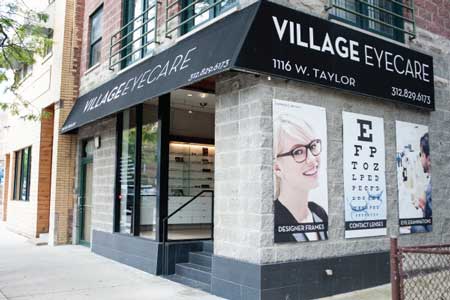Eye Center Andalusia: State-of-the-Art Take Care Of All Ages
Eye Center Andalusia: State-of-the-Art Take Care Of All Ages
Blog Article
Understanding the Various Vision Correction Procedures Available for Clearer View
In the world of vision adjustment procedures, a plethora of options exist to resolve refractive mistakes and give individuals with more clear sight. From the widely recognized LASIK surgical procedure to much less invasive treatments like PRK and implantable lenses, the area of ophthalmology uses a range of strategies tailored to match different requirements and choices. Each procedure comes with its very own set of factors to consider, advantages, and prospective threats. Recognizing the nuances of these vision improvement techniques is vital for making notified choices about one's aesthetic health. Allow's check out the intricacies of these procedures and clarified the path to attaining boosted vision clearness.
LASIK Surgery
LASIK surgical treatment is an usual refractive procedure used to deal with vision problems such as astigmatism, farsightedness, and nearsightedness. This surgical technique, which means Laser-Assisted in Situ Keratomileusis, aims to improve the cornea to boost how light is concentrated on the retina, eventually enhancing vision clearness. Throughout the treatment, a slim flap is created on the cornea, and a laser is used to remove accurate amounts of tissue to improve it suitably. This improving enables light to be accurately focused onto the retina, correcting refractive errors.
One of the main benefits of LASIK surgical treatment is the rapid improvement in vision experienced by people. Several individuals discover a significant enhancement in their sight immediately after the treatment. Furthermore, many patients report marginal pain and discomfort throughout the surgical procedure and recuperation period. The recovery time for LASIK is reasonably quick, with several people going back to their daily tasks within a day or more post-operation. In general, LASIK surgery is a preferred selection for individuals looking for a long-lasting solution for their vision issues.
PRK Procedure

PRK is an appropriate alternative for individuals with slim corneas or those at a greater danger of eye injuries, as it does not entail creating a corneal flap. The recovery process for PRK is somewhat longer contrasted to LASIK, as the epithelium requires time to restore. People may experience pain and blurred vision for a couple of days adhering to the treatment.
Despite the longer recuperation time, PRK can yield outstanding cause vision improvement, making it an important choice for those that may not appropriate prospects for LASIK surgical procedure. - Neurologist Andalusia
Implantable Lenses
Unlike PRK where the cornea is reshaped directly, implantable lenses offer one more technique for correcting vision by inserting man-made lenses inside the eye. This treatment is especially additional info helpful for people with high degrees of nearsightedness, farsightedness, or astigmatism that might not be appropriate candidates for laser surgeries like LASIK or PRK.
Implantable lenses, likewise understood as phakic intraocular lenses, work by supplementing the eye's all-natural lens with a fabricated one. These lenses can be positioned in front of the natural lens (anterior chamber) or behind the iris and before the all-natural lens (posterior chamber) By changing the power and positioning of these lenses, ophthalmologists can properly remedy refractive mistakes and improve visual skill.
One advantage of implantable lenses is that they are removable and exchangeable, giving adaptability for future modifications. However, as with any kind of surgery, there are threats included, such as infection or cataract formation. Patients taking into consideration implantable lenses should seek advice from an eye care professional to identify one of the most appropriate alternative based on their individual demands and eye health and wellness.
Corneal Rings

The treatment for putting corneal rings is fairly quick and minimally invasive, commonly performed as an outpatient procedure. During the surgical treatment, the ophthalmologist makes a little cut in the cornea and inserts the rings at a certain deepness. As soon as in area, the rings aid to improve the cornea, giving additional hints a smoother surface area for light to enter the eye, which can result in clearer vision.
Corneal rings are considered a reversible procedure, as they can be removed or replaced if necessary. While they may not completely eliminate the demand for glasses or call lenses, corneal rings can considerably improve vision quality and overall visual convenience for people with keratoconus or various other corneal irregularities.
Refractive Lens Exchange
Following the adjustment of corneal irregularities with procedures like corneal rings, an additional vision improvement method that can deal with refractive errors is Refractive Lens Exchange (RLE) RLE is a procedure that includes replacing the eye's all-natural lens with a fabricated intraocular lens (IOL) to remedy refractive mistakes such as farsightedness, nearsightedness, and presbyopia. This procedure is specifically helpful for individuals that may not be appropriate candidates for treatments like LASIK or PRK because of factors such as slim corneas or high refractive errors.
Healing time for RLE is fairly fast, and individuals can anticipate improved vision soon after the procedure. As with any type of medical procedure, potential dangers and difficulties exist, so a try this site comprehensive examination with an eye treatment specialist is important to figure out if RLE is the right vision adjustment choice.
Final Thought

In the world of vision correction treatments, a wide variety of options exist to resolve refractive errors and provide individuals with more clear sight.LASIK surgical treatment is a common refractive treatment used to deal with vision problems such as farsightedness, astigmatism, and nearsightedness.While likewise a common refractive treatment, the PRK (Photorefractive Keratectomy) technique varies from LASIK surgical treatment in its method to dealing with vision problems.Adhering to the adjustment of corneal abnormalities with procedures like corneal rings, one more vision correction method that can resolve refractive errors is Refractive Lens Exchange (RLE) LASIK surgical treatment, PRK treatment, implantable lenses, corneal rings, and refractive lens exchange are all choices that can address different vision concerns.
Report this page